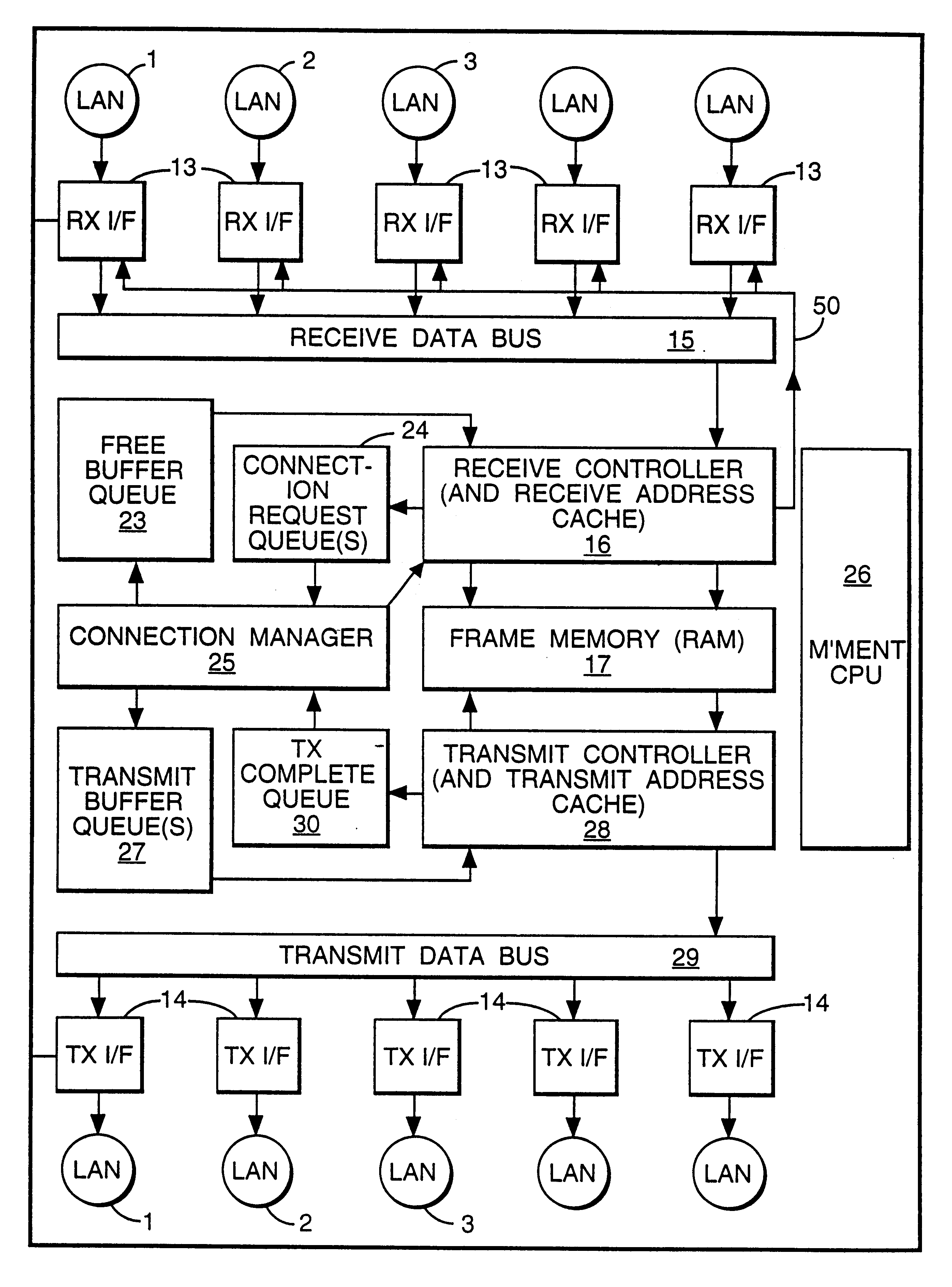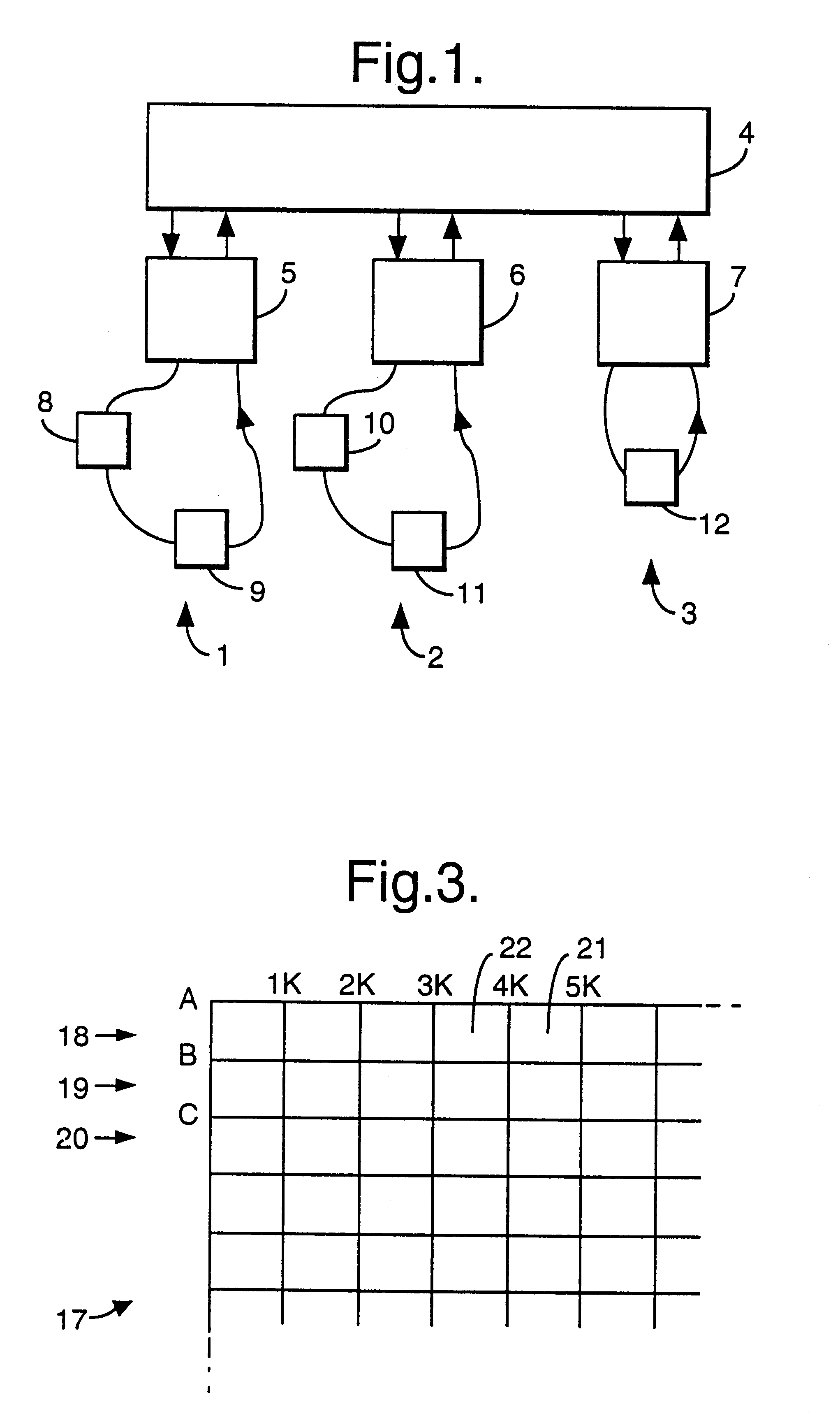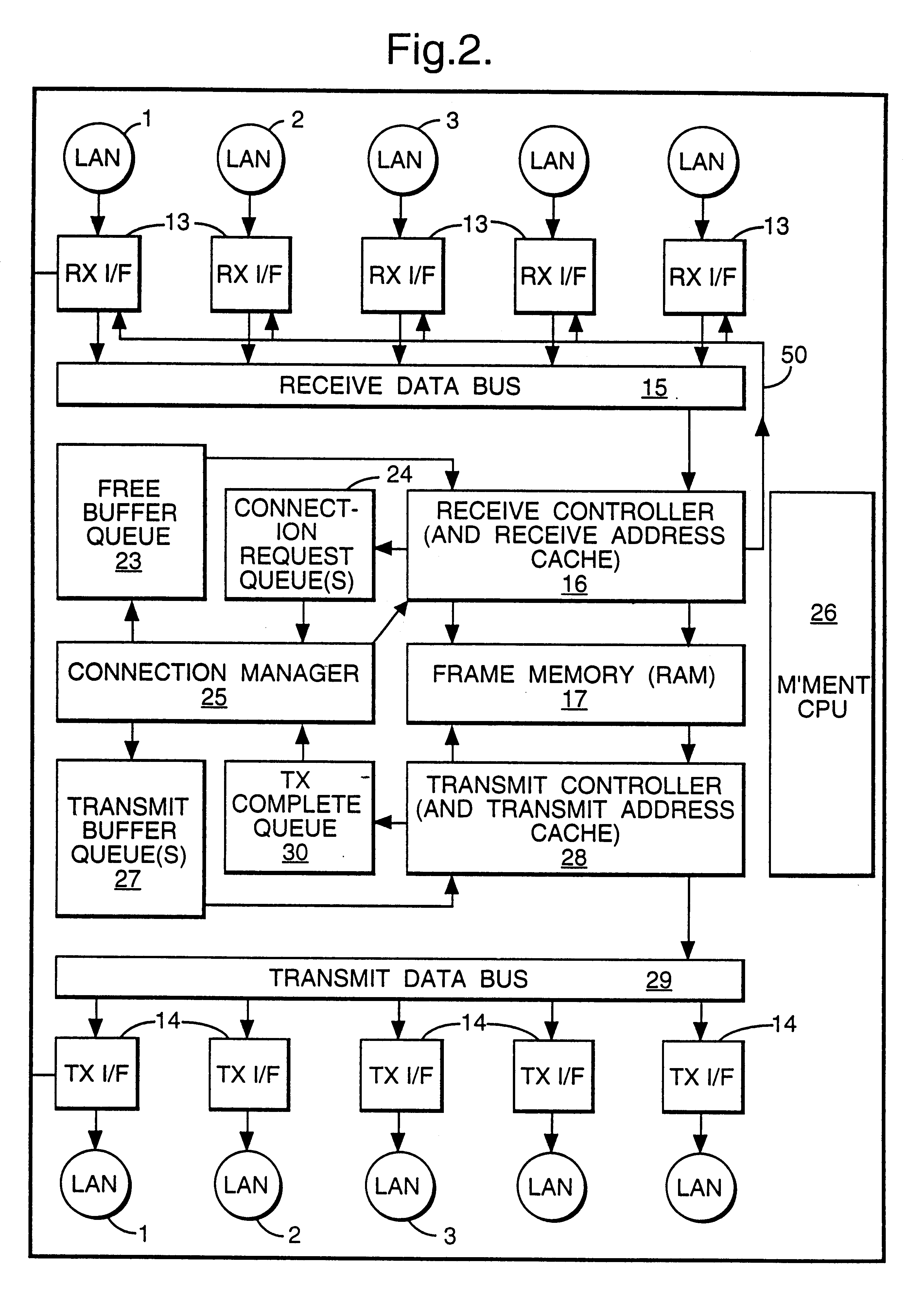Bridge device
a bridge and device technology, applied in the field of bridge devices, can solve problems such as aborting or otherwise severe damage of frames, device not allowing cut-through, and causing problems such as damage to the frame,
- Summary
- Abstract
- Description
- Claims
- Application Information
AI Technical Summary
Problems solved by technology
Method used
Image
Examples
Embodiment Construction
The communications network shown in FIG. 1 comprises three token ring local area networks 1,2,3 each connected to a bridge 4 via respective coupling devices 5,6,7. The local area network 1 has a pair of end stations 8,9, the local area network 2 has a pair of end stations 10,11 and the local area network 3 has a single end station 12. In practice, each local area network is likely to have a much larger number of end stations such as PCs, file servers and the like but for clarity only a small number is shown in the drawing. Each of the local area networks 1,2,3 is self-contained in the sense that data in the form of frames can be transmitted around the network through the coupling devices 5-7 in a conventional manner without passing through the bridge 4. However, occasionally it will be necessary for an end station on one network to communicate with an end station on another network. For example, the end station 8 may wish to communicate with the end station 12. In that case, communi...
PUM
 Login to View More
Login to View More Abstract
Description
Claims
Application Information
 Login to View More
Login to View More - R&D Engineer
- R&D Manager
- IP Professional
- Industry Leading Data Capabilities
- Powerful AI technology
- Patent DNA Extraction
Browse by: Latest US Patents, China's latest patents, Technical Efficacy Thesaurus, Application Domain, Technology Topic, Popular Technical Reports.
© 2024 PatSnap. All rights reserved.Legal|Privacy policy|Modern Slavery Act Transparency Statement|Sitemap|About US| Contact US: help@patsnap.com










